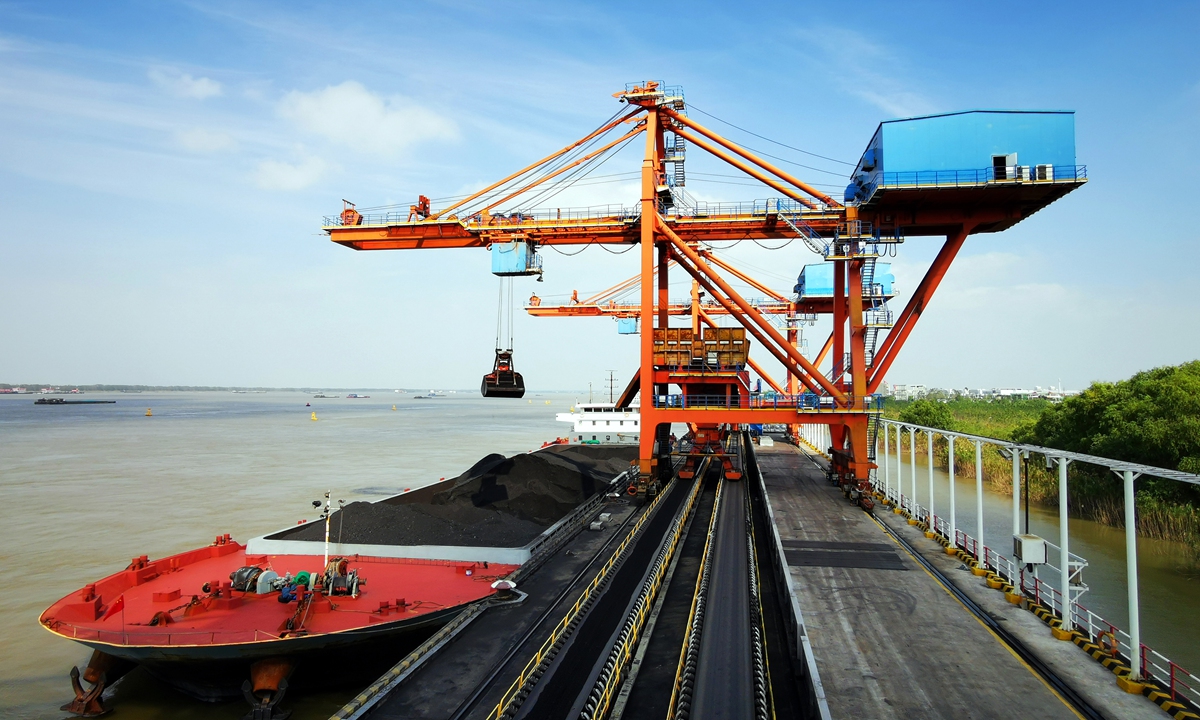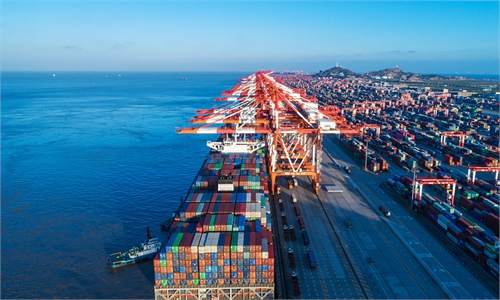Highly anticipated 14th 5-Year Plan may focus on 'dual circulation,' tech research independence
Next Five-Year Plan likely to ‘de-emphasize’ GDP growth

Five-year plan Photo:VCG
With major changes unfolding around the world and a global economy falling into deep recession due to COVID-19, China's forthcoming 14th Five-Year (2021-25) Plan is expected to guide the economy for the years to come and provide the world with an understanding of how the country will achieve its development goals amid worldwide turbulence.
The fifth plenary session of the 19th Communist Party of China (CPC) Central Committee, scheduled to be held in Beijing from October 26 to 29, is expected to formulate the 14th Five-Year Plan for Economic and Social Development and discuss far-reaching targets for 2035.
The new Five-Year Plan, which is very much in the spotlight this week, will mark the next stage in China's journey toward fully building a modern socialist country, as China faces a complex external environment that is very different from five years ago.
Currently, major countries are undergoing profound changes - especially the relationship between China and the US which is increasingly complex. Globalization is encountering severe countercurrents and technological competition has intensified and geopolitical risks are on the rise.
"External uncertainties are furthering global economic decline in the wake of resurgences in COVID-19 cases in the US and Europe, and a 'dual circulation' strategy will be of crucial importance for China in the next five years," said Cao Heping, professor at the School of Economics of Peking University, referring to a new development pattern which has its roots in domestic development but allows domestic and international development to reinforce each other.
Specific goals focusing on every development stages will be made clear in the 14th Five-Year Plan to guide economic and social development, Cao told the Global Times on Friday. "The country used to stress economic growth driven by exports, government-led investment, innovation and consumption, but the new strategy is more precise and inclusive to resolve new problems emerging in our development," he said.
Likewise, Wang Tao, chief China economist with UBS, wrote in a research note sent to the Global Times that the new five-year plan is expected to focus on boosting domestic demand and continuing structural reforms in accordance with the dual circulation strategy.

An unmanned ship unloader collects cargo from a ship in Wuhu, East China's Anhui Province on Tuesday. Photo: cnsphoto
The next five-year plan is likely to "de-emphasize or lower GDP growth target (to around 5 percent)" amid a more challenging external environment and a decline in growth potential, the economist reckoned.China may revise economic and social development targets during the 14th Five-Year Plan to stimulate growth but they will be within a range, Lian Ping, head of Zhixin Investment Research Institute, told the Global Times, projecting that China may set an annual GDP growth target of 4-5 percent for 2021-25
During the first four years of the 13th Five-Year Plan (2016-20), China maintained GDP growth of 6.6 percent, slightly higher than the target of 6.5 percent.
Despite the tremendous shock of the global pandemic, the resilient Chinese economy still grew up 0.7 percent year-on-year in the first three quarters. With China widely expected to become the only major economy to record an expansion this year despite the pandemic, the economy is well on course to hit the 6.5 percent target. This compares to annual average GDP growth of close to 8 percent in 2011-15.
Under a "dual circulation" strategy, technological innovation will drive China's manufacturing industry and push it up the global value chain while strategically ensuring domestic supply, experts noted. Achieving independence in key areas, such as scientific research and finance, is expected to be a focus.
"Technologies relevant to semiconductors, 5G and quantum computing, among others will be likely mentioned in the 14th Five-Year Plan. Policy support involving taxes support and talent nurturing will surely be included," Li Chang'an, a professor at the University of International Business and Economics' School of Public Administration, told the Global Times on Friday.
As UBS' Wang put it, China is likely to target higher spending on research and development and education as the nation tends to allocate more resources to technology bottleneck areas.
R&D spending as a percentage of GDP would rise to 3 percent during 2021-25 from an estimated 2.5 over the current five-year plan, per UBS forecast.

Tourists shop at a duty-free shopping mall in Sanya City, south China's Hainan Province, Oct. 5, 2020. Hainan is witnessing a boom in duty-free sales during this National Day and Mid-Autumn Festival holiday.Photo:Xinhua
Flexible planningExperts said that planning for the next five years should be flexible enough to swiftly respond to uncertainties brought about by a variety of factors.
The formulation of the 14th Five-Year Plan comes at a critical time with increasing risk of decoupling with the US. China has to draw up plans to address challenges in the economy, diplomacy and industrial development in the wake of the COVID-19 pandemic that has seen the worst global recession in decades and has impacted supply chains and demand worldwide.
Analysts said supply-side structural reforms, and reforms governing population migration and fostering people's income will draw policymakers' attention.
The existing trend of massive population migration between Chinese cities will continue over the next five years and the government should come up with corresponding population and land use policies, according to Lian.
Cao said the country will conduct more reforms over the next five years to release huge domestic economic potential. After achieving the goals of securing a decisive victory in building a moderately prosperous society in all respects as well as winning the fight against poverty which is soon to be realized, China will further narrow residents' income gap and improve its social security system.
By 2022 China is expected to enter the threshold of "high-income countries" as classified by the World Bank.
"China will likely continue to contribute the most to the global consumption growth, with its consumption rising to $12 trillion in 2025," according to UBS' Wang, who expects the nation's consumption upgrade to continue toward more services, higher quality, a greater focus on health and consumer experience, and more online shopping.


